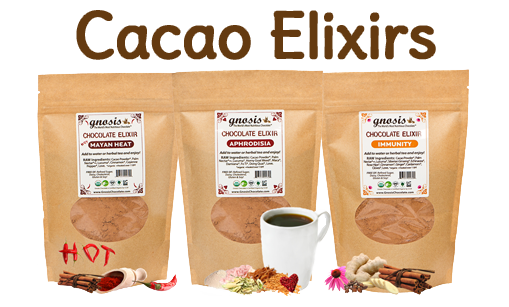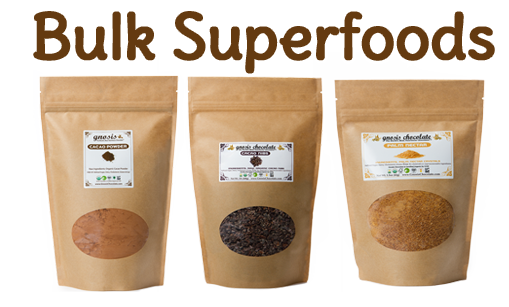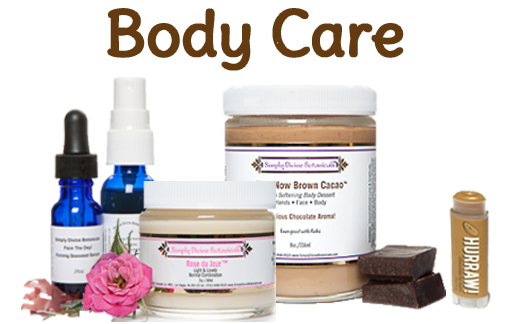In the body, erythritol is absorbed into the bloodstream in the small intestine, and then for the most part excreted unchanged in the urine. Because erythritol is normally absorbed before it enters the large intestine, it does not normally cause laxative effects as are often experienced after over-consumption of other sugar alcohols (such as xylitol and maltitol) and most people will consume erythritol with no side effects. This is a unique characteristic, as other sugar alcohols are not absorbed directly by the body in this manner, and consequently are more prone to causing gastric distress [3].
It occurs naturally in fruits and fermented foods [2]. At the industrial level, it is produced from glucose by fermentation with a yeast, Moniliella pollinis[1]. It is 60–70% as sweet as table sugar yet it is almost non-caloric, does not affect blood sugar, does not cause tooth decay, and is absorbed by the body, therefore unlikely to cause gastric side effects unlike other sugar alcohols. Under U.S. Food and Drug Administration (FDA) labeling requirements, it has a caloric value of 0.2 calories per gram (95% less than sugar and other carbohydrates), though nutritional labelling varies from country to country—some countries like Japan label it as zero-calorie, while European Union regulations currently label it and all other sugar alcohols at 2.4 kcal/g.
Erythritol has been certified as tooth-friendly[7]. The sugar alcohol cannot be metabolized by oral bacteria, and so does not contribute to tooth decay. Interestingly, erythritol exhibits some, but not all, of xylitol's tendency to "starve" harmful bacteria. Unlike xylitol, erythritol is actually absorbed into the bloodstream after consumption but before excretion. However, it is not clear at present if the effect of starving harmful bacteria occurs systemically.
After visiting many farms, we went to the facility where the agave pinas are crushed and the nectar is filtered, evaporated, and bottled. The IMAG team spent all day with me explaining every step of the process, and went into depth on every element I had questions about. Even at the end of the day when they had finished crushing the pinas, I wanted to revisit the crushing step and they restarted the machine. They had a true desire for me to see and understand everything I needed to write a full and accurate report. The first thing that was easy to see is that the factory was utterly spotless. Incredibly sanitary, no leaks, no chemical odors, and very well staffed. There were several operators monitoring the process and temperature gages. Here is the process from start to finish, all which can be done under 118.
First, the harvested pinas (agave cacti with leaves trimmed) are shredded into a fine pulp. This pulp is then flushed with warm water and pressed to separate the juice and fiber. The extra fiber is composted! They had just begun a batch of their raw agave, and there are temperature gauges along the crushing and filtering process which I saw were under 118 degrees. I touched the agave fibre as it came out of each stage by hand and it was only warm to the touch. The color of the liquid was a light yellow color and got darker as the fibre was pressed and some natural oxidization (like in bananas) occurred. This step of the process took under 15 minutes.
Then, the juice is poured into a tank where a heating coil spirals up through the juice to warm the agave. The coil structure is to allow more surface area to touch the juice which is important, especially at low temperatures. If they just had the bottom or sides of the tank heated, the agave at the center would rely solely on convection to move the cooler agave to the heat coming from the walls. The coil allows low temperature to go further. In warming the agave, the inulin (the aforementioned probiotic fiber) breaks down into it's simpler sugar molecules - fructose. This process is called "hydrolysis" and I can see why, unless you actually understand how hydrolysis takes place, it can sound like a highly complicated processing technique. It just means warming the agave. I would liken it somewhat to a dehydration process in raw bread or crackers, which can take over a day.Hydrolysis is also an essential part of energy storage and metabolism in plants and animals as adenosine triphosphate (ATP) is processed. Hydrolysis also occurs when fats, proteins, and carbohydrates are broken down by enzymes in the body - for example when proteases aid in digestion by causing hydrolysis in the pepetide bonds of protein.
Just as with most processes in food, hydrolysis in agave happens more slowly at lower temperatures. In raw agave, the process takes about 34 hours whereas in cooked agave it takes only 8. The agave in the tank at the time I visited was unfortunately not made for raw production (they had just started the raw production in the shredding and filtering stage and were filling a new tank which would be hydrolyzed the next day. This is the one part of my visit I am not satisfied with - better planning would have allowed me to witness the entire production done in the raw method, and I certainly would have stayed for an extra day had I known their production schedule in advance). But I did see other sections of the raw process done specifically under 118 degrees, I saw temperature gauges and monitoring, and after getting to know the IMAG team, I do have trust in their integrity and in their word. When it comes down to monitoring the "rawness" of a product as I explain further in my essay on Raw Integrity, it comes down to trust. As long as there is not a raw certifier who can inspect a printed record of temperatures throughout all processing - just as with certified organic products and their rigorous auditing process - there must be trust amongst manufacturers. And this is why I am so happy that I visited and go to know the intentions and motivations of the IMAG team. I cannot speak for all agave manufacturers, but I do trust IMAG enough to believe that the hydrolysis does not exceed 118 degrees. IMAG is also inspected by 2 outside auditors - though not for raw - but I met one of the inspectors and he confirmed my questions. Either I will return or one of my colleagues will visit with a temperature gun to verify in person that this is all done with Raw Integrity.
The last step of the process takes only about ten seconds as the juice goes through a vacuum pressure tunnel and the water is evaporated out of the juice. The temperature gauges all read exactly at or slightly under 118 degrees. Because the evaporation occurs within a vacuum, it is possible to extract all the water without needing to boil the juice. The water is then recycled - it goes back to the shredding and filtering stage.
We visited where the agave is bottled and stored, and then we went to their laboratory where they perform all analysis of their final product in house. This is extremely rare - normally a third party was used. We analyzed light, amber and dark agaves to see their breakdowns. If you are interested in viewing these, please don't hesitate to let me know! There is very little difference between the colors which confused me, so we went back to the office to go over the details of color.
COLOR
Before my visit, I was convinced that the color of agave indicated something about the processing temperatures. I had conversations with several others in the industry about this and the general consensus was that - if the fresh agave cactus juice was clear or amber when extracted from the pina before processing, it should remain clear or amber through processing. It made sense to me that, with heating the agave would become darker as with the caramelization of sugar. But, because no one had ever seen a fresh pina, it remained unclear which color to look for. The IMAG team confirmed that heat does have an effect on the agave - heating the agave for longer periods of time and/or at higher temperatures - can lead to a dark agave. But (and this involved some drawing of diagrams) all colors of agave - clear, light, amber, and dark agaves can ALL be produced at any temperature because filtration also has a major influence on color. Larger particles that can pass through a coarser filter result in darker agave whereas smaller particles that can pass through a fine filter result in a ligher color agave. If the mesh is extremely fine, a clearer agave can be made. However, the clear agave - they explained - usually requires an enzyme because even a very low temperature hydrolysis will darken the color slightly. Perhaps the agave can be clear directly after filtering, but if the juice is not hydrolyzed enough, too much water and too much inulin will remain in the final product which would certainly render it useless. IMAG does not produce clear agave now because they do not use any added enzymes or chemicals in their process.
So now to address the questions and concerns raised by Dr. Mercola. Please keep in mind that I have learned a lot over the years from Dr. Mercola and do respect his work. I am only breaking down these statements to respond directly to the concerns that have been raised by our customers who read his newsletter which went out to over a million readers. Having actually witnessed the process he speaks of, I feel I might have some helpful insight. Again please also keep in mind that
I cannot speak for all makers of agave, but I am confident in my specific source.
1. "Most agave "nectar" or agave "syrup" is nothing more than a laboratory-generated super-condensed fructose syrup"** Making nectar out of a pina is not something we could do in our teeny tiny NYC chocolate kitchen, but the process isn't so complicated and I think it could certainly be done if you had fresh pinas, something to crush and grind it, and a way to heat the juice to evaporate out the water without boiling (like a pot over very, very low heat). If you used a closed dehydrator without vacuum, then the hydrolysis would occur, but a lot of water would remain in the juice. This may be fine for use in most recipes, but that water in chocolate can ruin your recipe! So I believe the vacuum evaporation is an essential part of making a successful agave nectar... but it is certainly not just a laboratory-generated product!
2. "'The process which many, if not most, agave producers use to convert this inulin into "nectar" is VERY similar to the process by which cornstarch is converted into HFCS1."** From what I have understood, the processing of High Fructose Corn Syrup involves the following which are not part of agave processing: enzyme conversion with alpha-amylase, glucoamylase, and xylose isomerase, centrifuges, hydrochloric acid, deionization, and larger issues including GMO and Government Subsidization. Although I haven't visited a HFCS facility, my visit to Jalisco and my studies are enough to convince me that the two processes are very, very different in reality!
3. "Here is a partial list of the chemicals many producers use: Activated charcoal, Cationic and ionic resins, Sulfuric and/or hydrofluoric acid, Dicalite, Clarimex, Inulin enzymes, Fructozyme."** IMAG uses not a single one of the above, or any other, chemicals in their processing.
4. "While agave syrup does have a low-glycemic index, so does antifreeze -- that doesn’t mean it’s good for you. Most agave syrup has a higher fructose content than any commercial sweetener -- ranging from 70 to 97 percent, depending on the brand, which is FAR HIGHER than high fructose corn syrup (HFCS), which averages 55 percent. This makes agave actually WORSE than HFCS."**
I think it's also important to point out the following part of Dr. Mercola's article, which applies to IMAG:
"Nevertheless, these ethical companies seek to provide an outstanding product. There are a few companies who commit to and actually achieve these criteria and actually: Work with the indigenous people, Use organic agave as the raw material, free of pesticides, Process it at low temperatures to preserve all the natural enzymes, Produce a final agave product that is closer to 50% fructose instead of over 90%, Fructose is bonded or conjugated to other sugars and not floating around as “free” fructose, like HFCS, which is far more damaging. The VAST majority of companies however do not apply these principles and essentially produce a product that is, as this articles states, FAR worse than HFCS."**
"If you are going to use agave you will certainly want to seek out one of the companies that adhere to the principles above. However you will still need to exert caution in using it. Just like fruit it is quantity issue. Fructose only becomes a metabolic poison when you consume it in quantities greater than 25 grams a day. If you consume one of the typical agave preparations that is one tablespoon, assuming you consume ZERO additional fructose in your diet, which is VERY unlikely since the average person consumes 70 grams per day. Even a hundred years ago, long prior to modern day food processing, the average person consumed 15 grams a day."**
Although the IMAG agave does contain around 90% fructose, you would have to consume 2-3 bars of chocolate in order to meet the quantity Dr. Mercola suggests is when it becomes a "metabolic poison!" I might eat that much, but I doubt anyone else does :) I believe it's so important to keep in mind that fructose is the sugar in fruit! It seems that somehow, fructose has conveyed as an evil element in our diet. If this were true, our biological instinct would not be attracted to consume fruit. The rich vibrant colors, succulent aroma, and delicious flavors of fruits would not be attractive to our ancestors in the wild, just as we are not interested in consuming branches of trees like many insects are!
In our products, you consume a small amount of agave mixed with the fiber, antioxidants, minerals, and vitamins of cacao beans, fruits, nuts, and the medicinal herbs and superfoods we add. It's not as though we are consuming an apple's worth of agave! (or, if you are, the maybe you'd like to consider refining your palette to enjoy a full range of flavors including bitter greens!) Perhaps if you consume a whole bar of chocolate, several other raw desserts with agave, a bunch of bananas, and put several teaspoons of agave in your tea, you might be overdoing it! Although I do not believe "everything in moderation" is an accurate statement (you don't want ANY drugs in your system, for example!)
As a final word, I would like to mention the importance of remembering to do some background research. Although the internet allows us access to much wonderful information and fact, there are also many fictitious claims for which the internet unfortunately paves way into our homes. One scary article on agave written by someone who has never visited an agave facility (and who sells meat, dairy, and chocolate sweetened with tapioca syrup and dextrose on his website) resulted in millions of people shying away from a wonderful product. Not that everyone can visit agave farms or cacao farms, but please do also check sources who have! There are many, and I've posted links to their reviews below.
I will continue to play with the healthiest superfoods and sweeteners available on the market. This is my mission and I follow it with all my heart for the sole benefit of providing you with a product that energizes you and allows for a change in your diet and overall well being. There is no better sweetener on the market that works with chocolate - though Palm Nectar is proving to be more and more exciting!
**Mercola Article: http://articles.mercola.com/sites/articles/archive/2010/03/30/beware-of-the-agave-nectar-health-food.aspx








